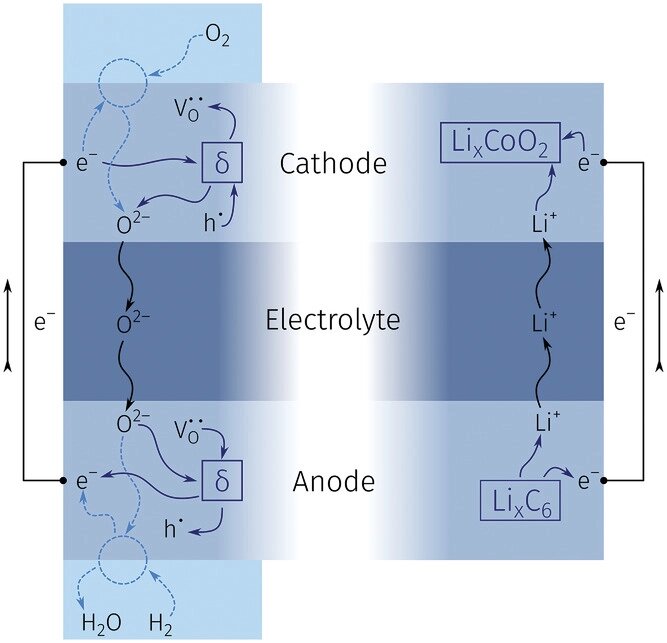We find lithium-ion batteries everywhere. In our smartphones, remotes, and even our cars. And we might think they are the best because they are ubiquitous. But the main issue with Li-ion batteries is their durability.
Scientists at the Technische Universität Wien (TU Wien) in Austria have developed a new battery that is made of incombustible and common materials, is able to regenerate, and has an unrivalled long-life service.
Welcome to the world of oxygen-ion batteries.

The TU Wien recently showed that their prototype battery is perfect for energy storage, and since its capacity doesn’t degrade over time, it can bear the title of “forever battery.”
Other attempts to dethrone lithium-ion batteries are on the way. For instance, Texas A&M University has been working on a water-powered battery, while the Illinois Institute of Technology, along with the US Department of Energy, with a lithium-air one.
But today, let’s explore this new technology based on oxygen.
Today’s Focus of Attention is reader-supported. We sometimes include products we think are useful for our readers. If you buy through links on this page, we may earn a small commission.
No Expensive Components
First, this novel family of batteries employs ceramic materials and doesn’t need precious or costly minerals such as cobalt or nickel.
Tobias Huber, professor at TU Wien, noted, “The use of ceramic materials is a great advantage because they can be adapted very well.”
Instead of pricey components, this pilot version uses lanthanum, one of the more common rare-earth elements, which has many applications in industry and technology. But scientists are working on a cheaper replacement.
How Do Oxygen-Ion Batteries Work?

After charging the battery, oxygen ions move from one ceramic electrode to another and can also migrate back, hence generating electricity.
Professor Jürgen Fleig said, “The basic principle is actually very similar to the lithium-ion battery. But our materials have some important advantages.”
If oxygen is lost due to side reactions, then it can be replaced with oxygen from the ambient air. So it guaranteed that oxygen-ion batteries could, in essence, last forever.
“Ceramics are not flammable, so fire accidents, which occur time and again with Li-ion batteries, are practically ruled out.”
But… There’s Always A But
Because this type of battery is still in its nappies, some hurdles stand in the way.
The first is its lower energy density, which is one-third that of lithium-ion batteries. Number two, oxygen-ion batteries work best at temperatures between 200 and 400 degrees Celsius, making them impractical for many devices, including cars. At least for now.
However, they fit perfectly for power storage, above all for solar and wind generation. In this scenario, intense heat and low energy density are not disadvantages. Producing large quantities of these low-cost, long-life batteries with no fire hazard compensates for their shortcomings.
The progress of this technology, along with others in this field, is proof that many research institutions are working hard to find more sustainable ways to produce and store energy.
As research continues, we might see a greener landscape emerging soon, driven by innovative and eco-friendly solutions like oxygen-ion batteries. These advancements will not only contribute to reducing our reliance on fossil fuels but also help mitigate the environmental impacts associated with energy production and consumption.
In time, these collective efforts will ultimately benefit both our planet and future generations.


